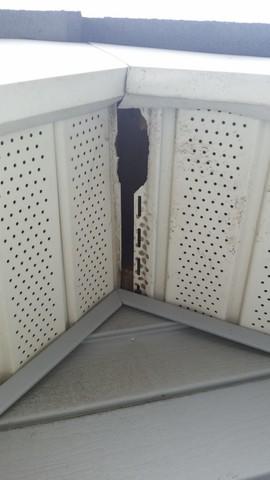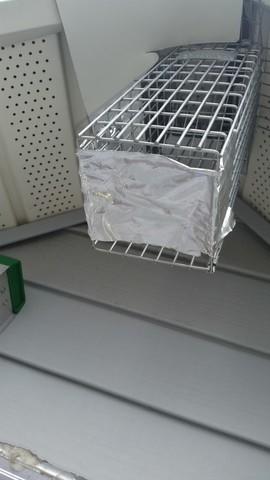Squirrels rip through soffit in Highland Park, NJ home
Challenge
A Highland Park, NJ homeowner had contacted Cowleys after hearing wildlife noises in her attic.The homeowner was very nervous about the infestation in her attic, and she was quite relieved when I arrived to remove whatever was up there. She told me that she was hearing scratching noises and the sound of animals running around on top of the ceiling. These noises were almost always during daylight hours, so I knew this probably wasn’t a raccoon infestation since they are nocturnal. It’s very helpful for me to talk with the homeowner to get as much information as I can about the infestation — when it started, the types of sounds, the time of day, any property damage, and whether any animals were seen on the roof. This information helps me focus my inspection and expedite the resolution of the problem.
This particular homeowner had not seen any wildlife on her roof, so she was not positive what intruders were in her attic. Nevertheless, based on her description, I had a strong sense of the nuisance wildlife causing her so much grief — squirrels! Of course, I still needed to conduct a thorough inspection to confirm the type of wildlife and formulate a plan that would most effectively trap and relocate the wildlife.
Sure enough, droppings and track marks in the attic indicated that this was a squirrel infestation. Now, I needed to find their access point into the home. Squirrels are in the rodent family, and like all rodents, these animals were born to gnaw. With their razor-sharp teeth and claws, squirrels can easily rip through many building materials. A key part of any wildlife job is exclusion — sealing any access points to prevent a re-infestation. With this job, it did not take much detective work to find where the critters were entering the attic: there was a gaping, massive hole in the soffit. The soffit is the finished wood or vinyl horizontal underside beneath the overhanging section of the roof eave. Soffits are one of the most common entry points for squirrels and other wildlife, right up there with fascia boards. Because these materials are near the roof line, they are prone to water-damage and rot. For wildlife, these softened building materials are often the weakest link in the home’s exterior, and they’ll have no hesitation to exploit it to gain access. Your quiet, dry, private attic makes for a great sanctuary and nesting area for wildlife. For mothers, attics are an ideal location to care for their babies. Attics protect them from the harsh outdoor elements and potential predators. Unfortunately, wildlife are not polite guests. They can cause significant property damage while in your home with their gnawing and scratching. Their disease-carrying droppings can ruin insulation and create a health hazard for the home’s residents.
Solution
It was time to trap the squirrels and relocate them to a better place far away from this home. First, I installed a “one-way” door over their access point. This device allows the squirrels to leave the attic, but it’s a one-way trip. The door will not allow them access back in. I then strategically set and baited three humane traps. Once the animals are caught, I’ll safely relocate them.
After I finished with my set-up, I spoke with the homeowner to review what I had done and let her know the next steps. While I was speaking to her, I happened to glance up at the traps. Lo and behold, there was already a trapped squirrel. I’m usually able to trap animals quickly, but not quite that quickly! Both of us were happy to see instantaneous results. I removed that trap to relocate that squirrel, and reset another one. I want to be positive that there are no other squirrels using her attic. I’ll continue to check the traps until there are no more signs of squirrel activity. At that time, we’ll take down the traps and repair the soffit damage.


